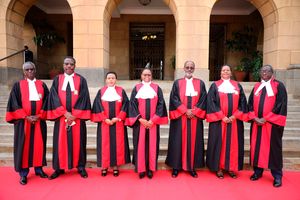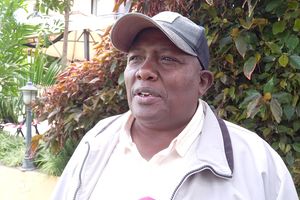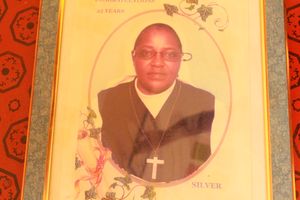
A soldier from the armed forces of the DRC on foot patrol in the village of Manzalaho near Beni.
| Alexis Huguet | AFPNews
Premium
Volatile region defined as the Afghanistan of Africa
For years, violence has been endemic in eastern DR Congo, with two major wars (1996–1997 and 1998–2003) in the country beginning in the east, an area that is home to the vast majority of the country’s armed groups.
It is this region Kenya Defence Forces (KDF) soldiers are expected to be deployed in the coming weeks – in Ituri, North and South Kivu.
Other than Ituri, North and South Kivu, the conflict has extended to neighbouring Orientale, Maniema and northern Katanga.
Official military in the region are the Congolese Armed Forces (FARDC) and the United Nations Forces (Monusco).
It also has a host of rebel groups, notable the Rwandan (DFLR), remnants of the M23 rebels and armed forces from neighbouring Rwanda and Uganda.
“While fighting in eastern DR Congo flows from many sources – ethnic, political grievances and regional geopolitics – underpinning this volatile mix is the impoverished region’s resource curse,” a report by the Council on Foreign Relations says.
“Lack of economic opportunity fuels recruiting for armed groups and competition for land and other natural resources often leads to violence. Completing the circle, rebel forces – often with outside collusion – feed off the region’s wealth to perpetuate armed struggles.”
Bunia, the capital of Ituri, saw some of the deadliest violence during the Second DR Congo War.
North and South Kivu cover 67,000 square kilometres and border Burundi, Rwanda, Tanzania and Uganda.
North Kivu is four times the size of Belgium, DR Congo’s former colonial master.
It is in Goma, the capital of North Kivu, where Italian ambassador Luca Attanasio, a policeman and their driver were killed in an ambush in February.
Militias operating in the region include M23, the Democratic Forces for the Liberation of Rwanda (FDLR), the Allied Democratic Forces (ADF) of Uganda, the Mai Mai, Raia Mutomboki (Outraged Citizens), the Patriotic Resistance, National Peoples Coalition for the Sovereignty of the Congo (CNPSC), Nyatura and Maï Maï Sheka (Nduma Defence of Congo – NDC).
The others are the Local Defence Forces Busumba (LDF), Front de Défense du Congo (FDC), Union des Patriotes Congolais pour la Paix (UPCP/FPC), Mouvement d’Action pour le Changement (MAC), Mouvement Populaire d’Autodéfense (MPA), Forces Nationales de Libération (FNL) and Coalition des Groupes Armés de l’Ituri (COGAI)/MRPC).
The M23 rebel group was made up of mainly ethnic Tutsi soldiers. It was led by Bosco Ntaganda.
The ADF started out in Uganda in 1996 but now operates in North Kivu.
The DR Congo crisis, defined by brutality and mass displacement, began when nearly two million Rwandans crossed into the region during and after the 1994 genocide.





